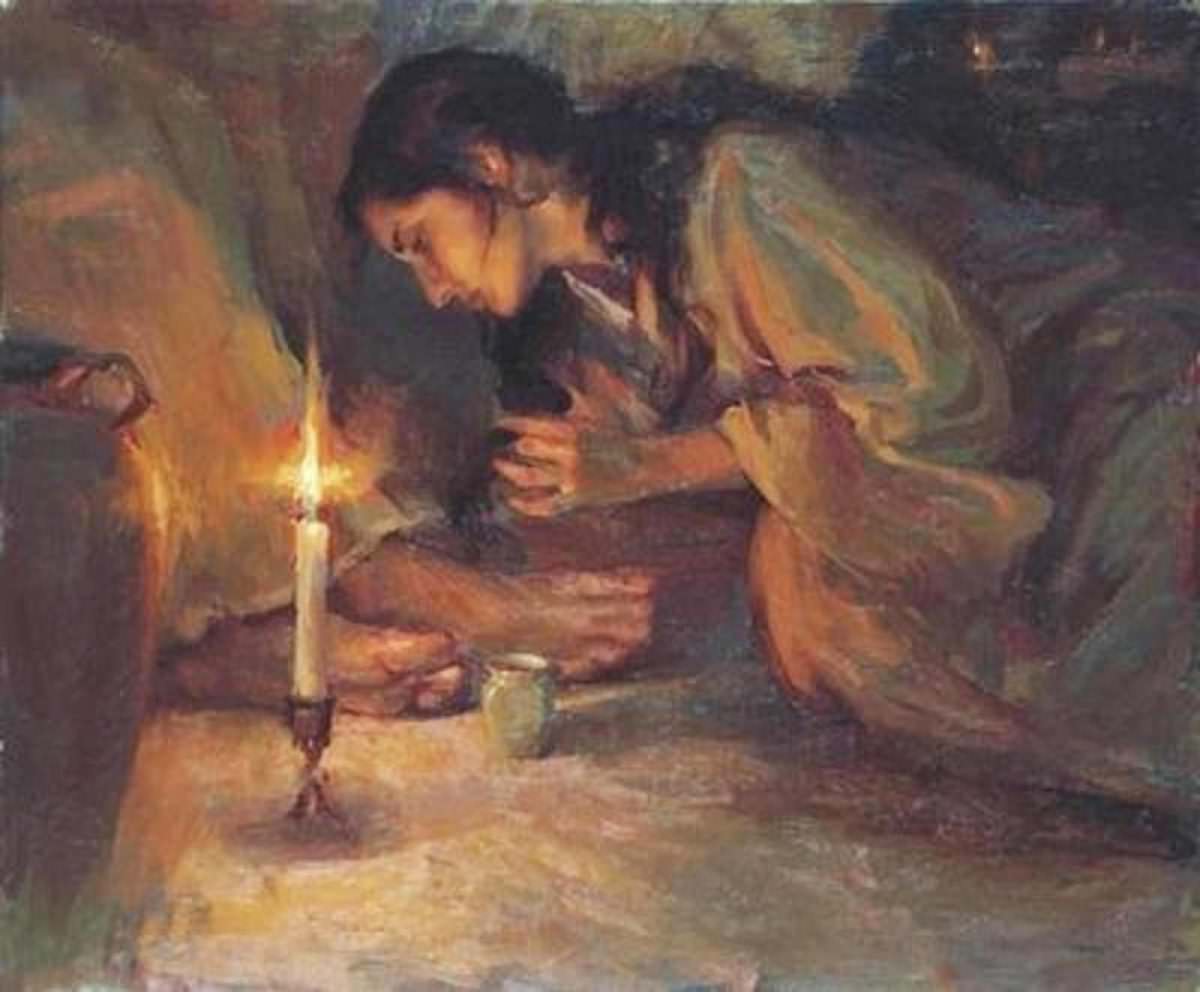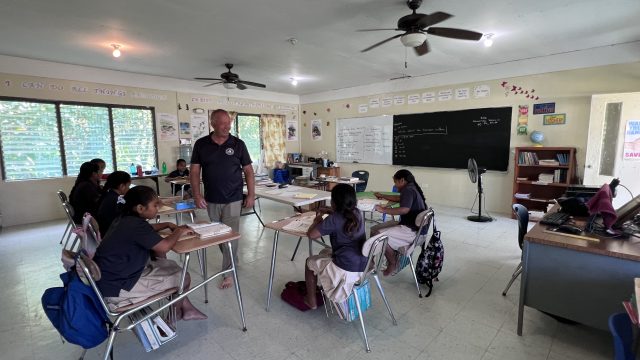Jesus was nearing the end of His earthly ministry. As crowds around Him grew larger with people eager to see this miracle worker, […]

Jesus was nearing the end of His earthly ministry. As crowds around Him grew larger with people eager to see this miracle worker, the Jewish leaders’ hatred of Jesus increased. They considered the Passover a perfect time to trap Christ.
This is the backdrop in which Jesus entered Simon’s house with His disciples and close friends. Let’s focus on three of the principal characters: Simon, Judas, and Mary.
Simon
Simon may have been one of the 10 lepers who didn’t stop to thank Jesus after they had been healed. Or he may have been a different leper healed by Jesus. Clearly he wanted to show his thanks for being healed by Jesus by inviting Him to a feast. Simon was a Pharisee, and this adds significance to this gesture, since many Pharisees and rulers sought to undermine Jesus’ authority. Perhaps Simon wanted to repay this colossal debt for Jesus healing his leprosy. He was a leader and didn’t want to be indebted to anyone. So he seized the opportunity to redeem this honor.
According to Luke, when Simon saw Mary anointing Jesus, he began to doubt that Jesus was the Messiah. Mary was a known sinner. Simon thought, If Jesus was really a prophet, He wouldn’t let this sinner touch Him.
Here was Simon, saved by Jesus from a living death, and privately doubting his healer. But Jesus, ever tactful, did not publicly rebuke Simon. Instead, He told a parable (Luke 7:40-43).
A creditor had two debtors. One owed 500 denarii, the other 50. Neither of them could pay, so the creditor freely forgave them both. Which one will love the creditor more?
Simon said, “The one who had the bigger debt forgiven.”
Jesus said, “You have judged correctly” (verse 43, NIV).
Gently but firmly Christ said, “Look at Mary. I entered your house, and you didn’t provide water to wash My feet. But she washed My feet with her tears and wiped them with her hair. You gave me no kiss of welcome, but this woman has not ceased to kiss My feet since I came in. You did not anoint My head with oil, but she has anointed My head [Luke] and My feet [John] with fragrant oil. Therefore, her sins, which are many, are forgiven.”
Simon was preoccupied with the appearance of doing the right thing. He paid the debt of honor in order to move on. But he didn’t follow through on the simple acts of common courtesy that were customary at the time. He was a man of means; he must have had many servants. But he didn’t have a servant wash Jesus’ feet. Simon didn’t greet Jesus with the customary kiss offered to guests of honor.
Perhaps Simon purposely neglected Jesus. Maybe he calculated that, in the eyes of his colleagues, it would be easier if he did just the minimal amount to repay his debt so he could move on.
Judas
The reaction of Judas is told by John. Matthew and Mark merely mention that some of the disciples were indignant about the wasted perfume. We know that Judas held the money used by Jesus and His followers, money he used for his own personal gain. Judas asked, “Why wasn’t this perfume sold and the money given to the poor?” (John 12:5, NIV). He didn’t care about the poor; he was a thief (verse 6). The word “thief” used here is kleptes, from which we derive kleptomaniac, somebody with an obsessive urge to steal, even when there is no economic necessity.
Ellen White wrote: “The act of Mary was in such marked contrast to his selfishness that he was put to shame; and according to his cus-tom, he sought to assign a worthy motive for his objection to her gift.” 1 Do you know someone who tries to make others look bad so that he or she can look better? That was Judas.
Mary
Earlier in Jesus’ ministry He had cast seven demons from Mary Magdalene (Luke 8:2, 3). So it’s no wonder that while Martha toiled, Mary sat at Jesus’ feet. Ellen White observed: “Mary was storing her mind with the precious words falling from the Savior’s lips, words that were more precious to her than earth’s most costly jewels.” 2
Rich people like Simon would recline at the table on broad, low couches. These dining couches sloped down from front to back, with a pillow at the head. People would lie on their left sides and eat. Thus, their feet would be away from the table. Perhaps, as Jesus reclined, with His feet away from the center of the room, Mary approached without drawing much attention to herself.
Jesus had spoken of His approaching death. In her deep love and sorrow Mary longed to honor Him. At great personal sacrifice she purchased an alabaster box of spikenard to anoint Him. This ointment likely originated high in the Himalayas in northern India, and was considered “very costly.” At a cost of 300 denarii, it was the equivalent of 300 working days for a laborer at the time. Truly a gift fit for a king.
Breaking the seal on the box, she poured its contents on Jesus’ feet. Then she knelt, and as her tears mingled with the expensive ointment, she wiped Jesus’ dusty feet.
The Greek verb “to wipe,” ekmassein, is the same verb used to describe Jesus washing His disciples’ feet at the Last Supper. This guest, Mary, was doing something that the host had neglected to do. But Mary wasn’t just using water, and she wasn’t doing it just because it had to be done. This was a special anointing.
Mary sought to avoid observation, and her act might have gone unnoticed. But the ointment’s fragrance filled the room. Simon must have been one of the first to notice the aroma. Mary was probably lost in her act until she heard Judas barking his self-serving proclamation.
Then Jesus put His stamp of approval on Mary’s act. He gently admonished, “You will always have the poor among you, but you will not always have me” (John 12:8, NIV).
He went further, saying, “When she poured this perfume on my body, she did it to prepare me for burial. Truly I tell you, wherever this gospel is preached throughout the world, what she has done will also be told, in memory of her” (Matt. 26:12, 13, NIV).
No wonder this story is found in all the Gospels. It’s a story about forgiveness and redemption, a quintessential story about the hopeless underdog coming winning the ultimate prize. Jesus championed those who were poor, those who were sick, and those who were oppressed.
Perhaps that’s why we see Mary remaining at Jesus’ feet, even when He’s on the cross. Perhaps that’s why she’s one of the first disciples Jesus spoke to after the Resurrection, the one He empowered to tell the other disciples that He was alive.
Whereas Simon and Judas felt smug, without needing salvation, Mary considered herself a great sinner. That’s why Mary loved Christ so deeply. Her beautiful gesture was a heartfelt act of appreciation for Christ’s lavish love. She was driven by an undeniable, unquenchable love for Jesus.
1 Ellen G. White, The Desire of Ages (Mountain View, Calif.: Pacific Press Pub. Assn., 1898), p. 559.
2 Ibid., p. 525.
James L. Gulley is a research physician at the National Institutes of Health, near Washington, D.C.
Norman R. Gulley (James’ father) is a research professor in the School of Religion
at Southern Adventist University, Tennessee, United States.








